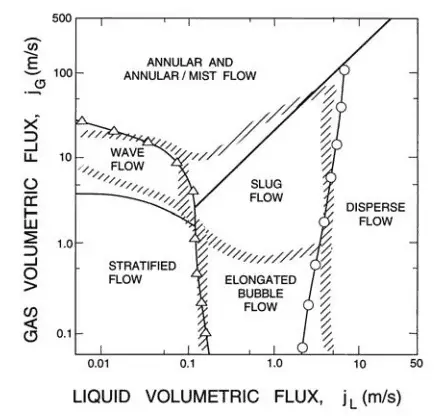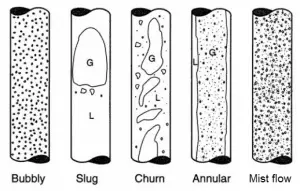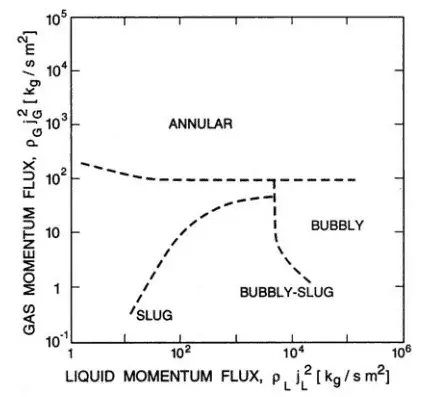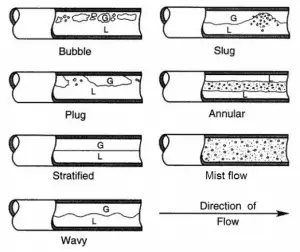Bubbly Flow – Vertical Tubes
The liquid flow rate is high enough to break up the gas into bubbles in the bubbly flow, but it is not high enough to cause the bubbles to become mixed well within the liquid phase. The bubbles vary widely in size and shape, but most commonly, they are nearly spherical and are much smaller than the diameter of the tube.
See also: Two-phase Fluid Flow
Bubbly Flow – Horizontal Tubes
In contrast to the bubbly flow in the vertical channel, the bubbly flow in the horizontal channel is strongly influenced by gravitational force. Due to the buoyancy, bubbles are dispersed in the liquid with a higher concentration in the upper half of the channel. This regime typically occurs at higher flow rates because, at lower flow rates, the gravitational force tends to drain the liquid annulus toward the bottom of the channel, resulting in stratified flow.



